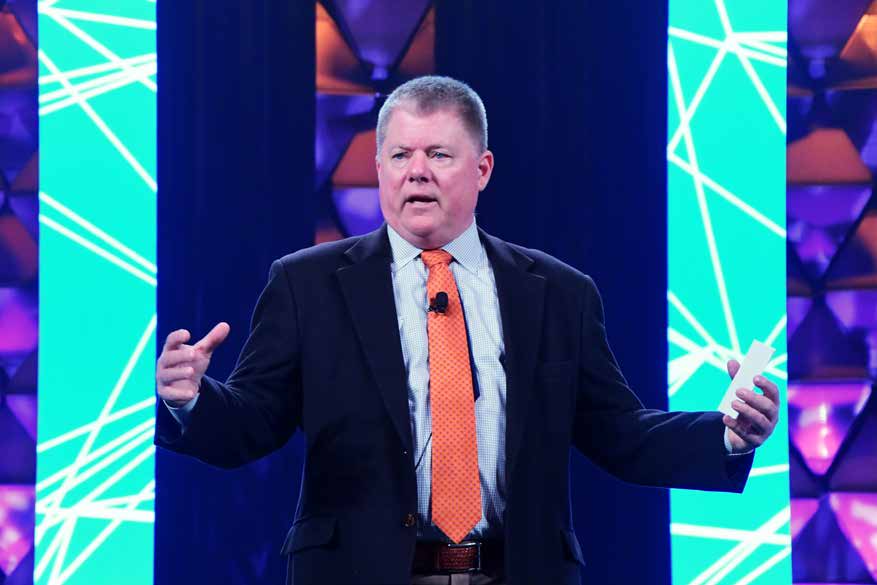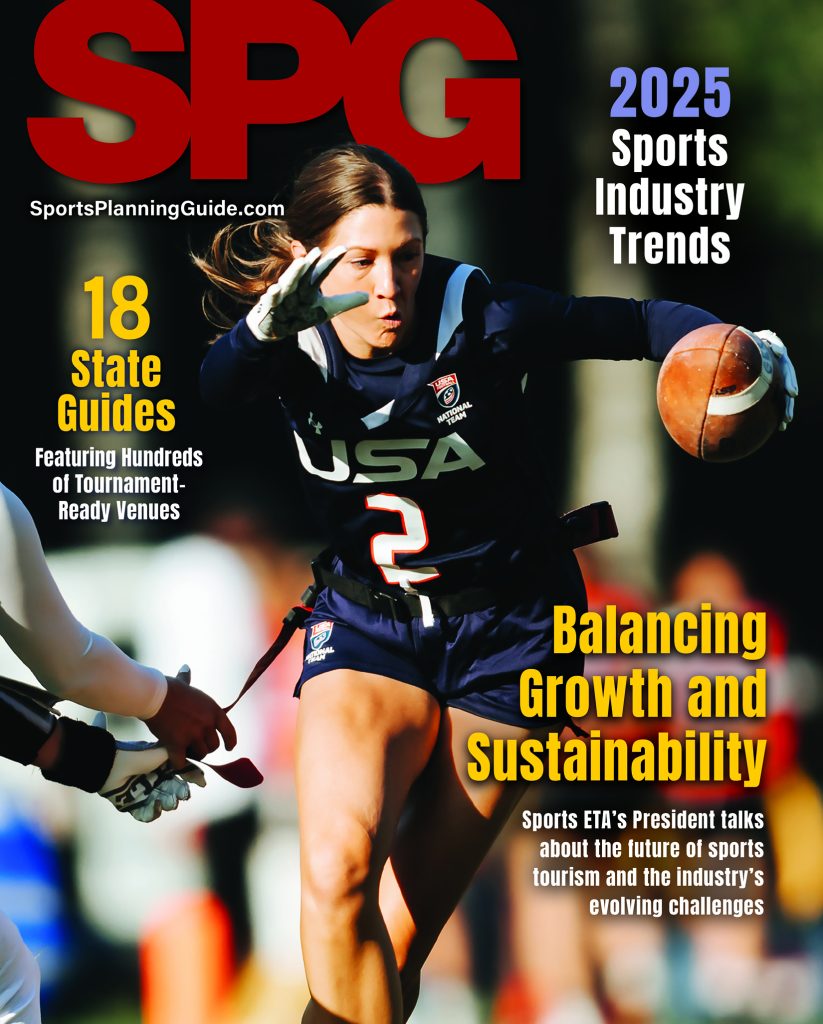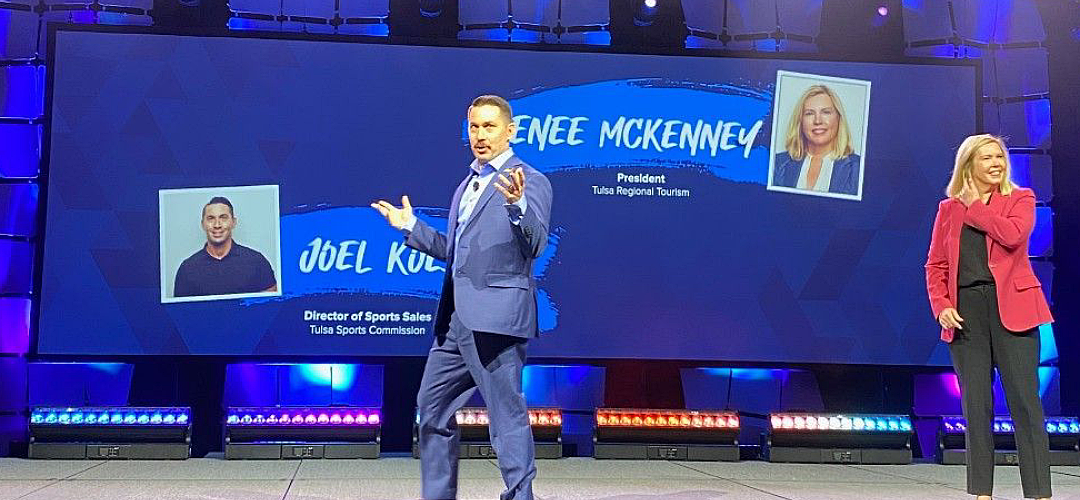Sports Tourism’s Evolution, Maturation to Returns on Investment, Mission & Effort
The expanse of sports tourism is a matter of past, present and future contexts, a series of evolutionary events, if you will.
One such instance occurred during a transitional period within the Sports Events & Tourism Association (Sports ETA) in 2018 shortly after Al Kidd began his new role as president and chief executive officer at the Association.
“It was clear from the onset that the value chain was much wider and broader than what we were engaged with. From a business standpoint, there was so much more opportunity,” says Kidd. “One of the goals was to expand the organization’s footprint and be fair and equitable across all the different categories.
“The strategic roadmap and 2020 Vision was finalized in 2018 and refined as we went forward. The plan formed in June 2017 during the first couple weeks on the job. Once Jennifer came on board, we quickly solidified and expanded our vision. It was a seminal moment for the organization. We clicked immediately and set out to establish our key points of light to build the assets and services to establish a nationally recognized and prominent force. She and our team have been working with me on the execution of that plan ever since.”
Kidd, who previously served as president of the San Diego Sports Commission with additional career stops in venture capital investing, online education services, marketing, advertising and strategic planning, possesses a penchant for data and research that aligns well with the philosophy of Dr. Jennifer Stoll, STS. After serving on the Sports ETA board while she was executive director of the Greater Grand Junction (CO) Sports Commission, Stoll was contracted by Sports ETA in late 2018 on the heels of earning her PhD from Troy University.
To complement a PhD-level research expertise—her work has been published regularly in academic publications including the Journal of Sport & Tourism—Stoll’s applied and lived experiences also include numerous nonprofit, athletic, coaching, faculty, volunteer, event management and entrepreneurial successes. Stoll lives with one foot in in the academic arena while also understanding first-hand the value of being a practitioner, a balancing act of learning and application that is ideal for today’s competitive nature of sports tourism.
“A lot of the research is based on theory, which is fantastic, but our core mission is to help our members do better business and be better at the business they’re in,” says Stoll, principal of Stoll Strategies and director of research and education with Sports ETA. “And that really needs to be with practical implementation.”
From Kidd and Stoll’s earliest conversations, Sports ETA began quickly refining its primary delivery mechanisms to include education, advocacy, resources and networking as the Association’s four strategic pillars, and the acronym E.A.R.N., a new organizational compass, was adopted.
SPORTING A NEW DIMENSION
A quarter century before Kidd and Stoll joined the Association staff, the National Association of Sports Commissions (NASC)—rebranded as Sports ETA in 2019—was established in 1992 to protect the integrity of the industry and to deliver quality education, networking and event management and marketing opportunities to its members. What started as a couple handfuls of sports commission members is now more than 800 destination, rights holder and industry partner members.
By the late 1990s, Frisco, Texas—which had a population of less than 10,000 in 1998—entered the game when it opened the Superdrome, where the 2000 U.S. Olympic Track Cycling Trials introduced the world to this once-small Texas town. “You have to understand that sports doesn’t just start with someone sending you an RFP; it starts with destination management and making sure that your destination is hospitable to sports,” says Josh Dill, STS, director of sports & events at Visit Frisco. “I can’t take credit for that. This infrastructure existed so much earlier, and I’ve just been able to capitalize on it.”
The Superdrome project was Frisco’s first foray into a public private partnership (P3) in sports, an entrepreneurial spirit that reverberates loudly more than 20 years later. Some of Frisco’s other projects of note include the Comerica Center (opened 2003, practice facility of the NHL’s Dallas Stars, home of NBA G League Texas Legends), Toyota Stadium & Soccer Center (2005, home of FC Dallas of Major League Soccer) and The Star in Frisco (2016, Dallas Cowboys World Headquarters). This continued investment in sports has helped spark Frisco’s exponential population growth to more than 200,000 residents. As sports continues to breathe life into the destination, Visit Frisco also shifted its tourism marketing tagline to “The City That Plays” and its sports-market-specific slogan to “Sports City USA”.
“I think that there are people in this city who are proud to say we are Sports City, but when Jerry Jones gets up in front of a press conference and says this is Sports City USA, that really catches on,” says Dill. “I don’t think people can argue the amount of success we’re having in sports.”
After three years at the Fort Worth CVB and five years at the Lubbock CVB, Dill joined Visit Frisco in late 2016 where he’s since helped Sports City USA deliver on its brand promises. The Visit Frisco team recently helped extend the NCAA FCS (Football Championship Subdivision) Championship through 2025 at Toyota Stadium, and it also brought the 2021 International Ice Hockey Federation U18 Men’s World Championship to Comerica Center amidst the pandemic.
“I made the leap to Frisco because it had all of the sports teams,” Dill says. “I had the backing that if I wanted to do an event, I had partnerships with teams that say we can make it work. Over time, I was playing tic tac toe, then I was playing checkers and now I get to play chess.”
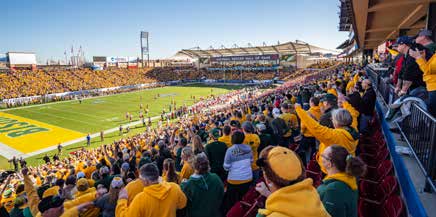
FCS football is growing in popularity.
FROM UNDERSTUDY TO PRACTITIONER
As the industry has matured, so too have the needs of Sports ETA’s membership. Kidd and Stoll remember parsing out bits of data in 2018 so the Association could better understand its members, and in turn curate programs more representative of Sports ETA’s whole membership. And it turned out that a polling of sports tourism leaders verified a high industry turnover rate for the Association to act on.
“It became clear that we had a lot of gaps on the research and education side. Not only did we only have a few courses, but they were only available in person so you had to make the travel roster,” says Stoll. “We were collecting data about content, topics of interest, the level of professionals in terms of tenure, and what markets they were involved with, and we started to realize quickly that we had a few hundred attendees to our first-timers events every Symposium.
“That’s really what led to the cultivation and development of the (Sports Tourism) Learning Institute. With limited resources in time and money that we have, we asked, ‘How do we serve the largest swath of our membership?’. That’s what you see developing out of the Power Plays and Certificates (online courses) is us really trying to hone in on topics as we build this bike while riding it.”
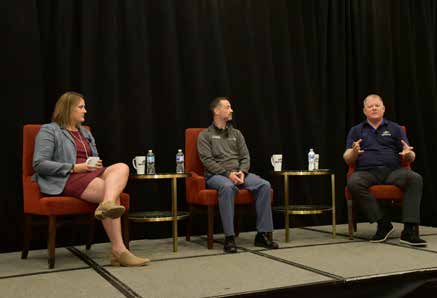
Sports ETA leaders are trying to guide the organization through a decimated tourism industry.
The flagship of the education pillar, the Sports Tourism Learning Institute (STLI) was unveiled in late 2020 as Sports ETA’s targeted applied learning center that serves the entirety of sports events and tourism. Moreover, the Sports Tourism Research Institute (STRI) is a work in process.
“With our education delivery, you have small markets, you have mid-size markets, you have brand new people, you have senior people, you have large markets that do primarily large events. On the destination side, we have significant differences between membership,” says Kidd. ”Coagulating a centralized research or programming output was wrong. We needed to do a better job of developing target market products and services, and that also includes our industry partners and rights holders.”
As part of the Association’s new certificate stacking model, the STLI currently offers Power Plays (free topical sessions) and a Certificate Playbook (lengthier asynchronous self-paced coursework). Moreover, there is a Front Office Education platform in the works that will be, according to Stoll, more rigorous, admissions-based, and built on consistency and credibility to place everybody who enrolls on equal footing. And as the Association’s contact database indicates—there are more than 13,000 venue contacts—Kidd adds there are substantial growth opportunities related to facilities education and practice.
“The area of great opportunity we see is in sports facilities and that is coming like a train,” says Kidd. “They are going to be considered a destination and will someday compete, as they already are in some places, with destinations and sports commissions.”
An experienced practitioner now, Dill admits he has grown from listener to event executioner to tactician to strategist throughout his career. Still, there is much to learn and Dill commends Sports ETA—a collective of professionals of all backgrounds and expertise to glean from—for expanding its programs.
“These things are not happening by accident. It’s a very deliberate growth plan and what you’re starting to see is a snowball effect,” says Dill, also a fourth-year Sports ETA board member. “We’ve continued to raise the value of the Association, and people are starting to see that value. The next evolution is to have more resources to reinvest into the Association. Financial resources and human capital will lead to even more value for the members. I’m very appreciative of where NASC brought us to, and I think now it’s an evolution, that next step of becoming an association truly for the industry.”
PARTNERING THROUGH A PANDEMIC
The pandemic decimated tourism, and sports tourism’s 2020 impact is projected to show a 60 percent decrease from the previous year—which would be a $27 billion yearover- year decrease in direct impact—when updated figures are released in late 2021 as part of Sports ETA’s State of the Industry Report in partnership with Tourism Economics (A Division of Oxford Economics). However, the segment enjoyed five straight years of growth (up nearly 17% from 2015-19) prior to the pandemic, a trend that figures to return in due time. Despite the effects of COVID-19, there were pockets of strong 2020 performance that included increasing preferences for outdoor activities and regional tourism. And as facilities have continued to come online even throughout the last 18 months, sports tourism is widely regarded as fuel for the future.
“We are not leading out of the pandemic—we are catalysts to the restart to tourism across America. And there is no debate by any CVB president that we are the main catalyst right now,” Kidd says. “The CVB world understands our value. We’re going to continue to develop the research around the support of those numbers.”
Sports ETA’s partnerships with Tourism Economics, Longwoods International, U.S. Travel Association and Destinations International activate the advocacy and resources pillars, amplifying its data capacity and credibility. Moreover, the Association continues to lean into techcentric industry partners like Playeasy and EventConnect, a deliberate play on the networking pillar, to serve destinations and rights holders.
“This is the most fun aspect; it’s been incredible to watch the positioning and credibility that Al (Kidd) has built in tangential industries,” Stoll says. “While we were at the Destinations International Convention, people were stopping us all over the place to let us know all the great things Sports ETA has been doing, and how sports has carried them through. That didn’t happen a few years ago, so the partnerships are a really exciting piece of it.”
The Association’s distribution partners on the event operator side include the International Association of Venue Managers (IAVM), American Society of Association Executives (ASAE) and the Professional Convention Management Association (PCMA). Kidd notes the influx of partnerships is about looking inside and outside of the industry and associating with the best of the best, both of which ultimately benefit Sports ETA members.
“Within each of these partnerships, the educational delivery is a big part of the expansion of our capacity outside to build relevancy and aspirational revenue,” Kidd says. “When we get to the resources, we spend a great deal of time on data collection and trying to move this industry into a better understanding of the importance of data. And frankly, COVID helped us get past the speedbump of getting participation in our surveys and studies, and now we have significant participation by our members that is producing some terrific information.”
The numbers demonstrate the industry’s compound growth is indeed economic, yet indirect impact, induced impact, brand value, return on mission and economic development have also become integral parts of the larger value presented by sports tourism.
“I think as it continues to evolve and get more sophisticated, as people are dipping their toes there’s just one more straw in that bucket,” Dill says. “I still think facilities will set you apart and just taking that approach of being involved in the event and having skin the game. Honestly, that economic development piece is how you end up being a chess player instead of a checkers player in sports tourism.”
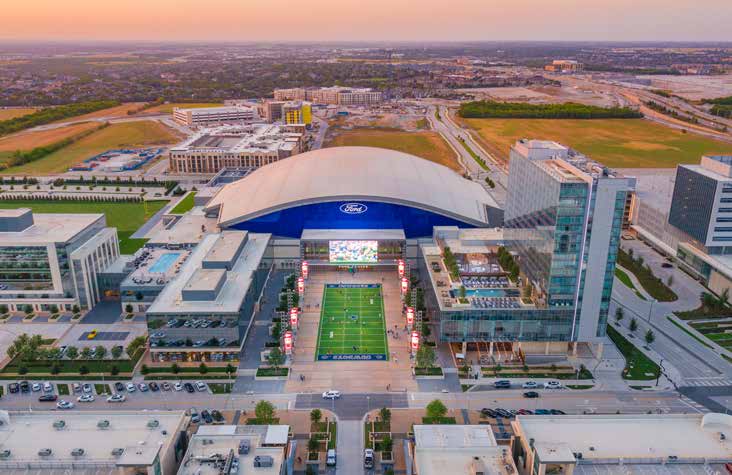
The Star Entertainment District in Frisco, Texas.
WHERE STARS ARE BORN
Another partnership that pushes the narrative about an expanded definition of success includes Sports ETA’s alignment with the 2021 U.S. Sports Congress (USSC) this December in Frisco, where the Economic Development & Sports Tourism Summit (ED&STS) and the Collegiate Championship Symposium will be produced jointly with USSC.
“We realize it’s not necessarily the people that sit at our sports tourism shows that need to hear this, it’s city leaders that need to hear this,” Dill says. “By creating an opportunity for colleges or economic development and city staff, they get to hear and see it first-hand. We’re going to take city and economic development leaders to The Star to show this isn’t just an idea, this is what it became, a whole district. We’re continuing to build districts as miniature city centers around sports venues, and it works.”
According to Dill, the U.S. Sports Congress ED&STS and College Championship Symposium partnership helps magnify an important conversation for those places that want to evolve and operate a high level. It also underscores an important story that Sports ETA is perpetuating.
“From our industry’s contributions to job and company recruitment and retention to our economic development efforts, which ties into school quality and property values, there’s a much bigger onion with a lot of layers that we have yet to tap into,” Stoll says. “We are looking in the future to provide some industry standardization as to how and what is measured, as well as how those metrics are communicated so we can take the platform that sports provides and start to do it justice for our members in terms of the funding behind it. That’s on the destinations side, the rights holders side, and that’s on the venues side across the board.”
And for Frisco’s expanding value proposition, that means continuing to double down on economic development and weaving sports into all of the destination’s work.
“We have some really smart people here in the arts and a lot of our NFL and MLS owners are art collectors. We’re building a performing arts center that is the newest project, and it’s going to sit across the street from The Star,” Dill says. “It’s literally going to be an intersection where sports and art meet. It’s just fun to be in a city where there is constant evolution.”
By Nick Povalitis, Plus Seven Company

